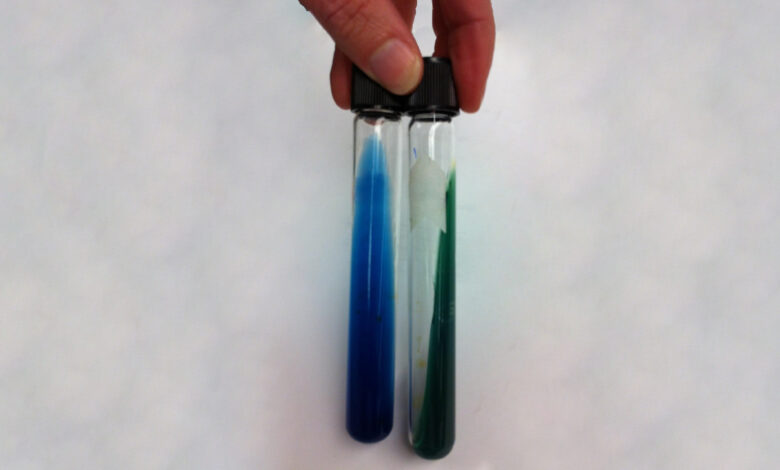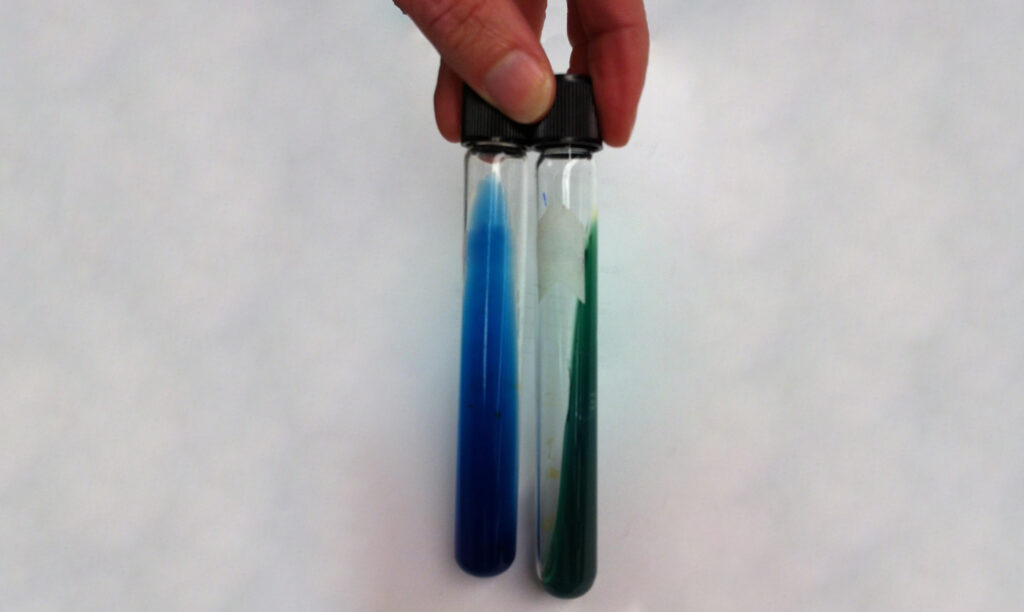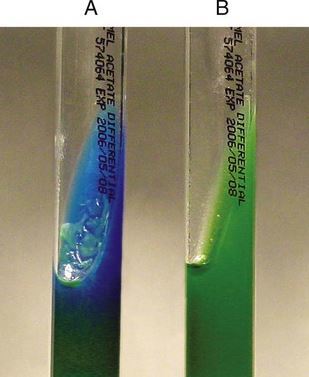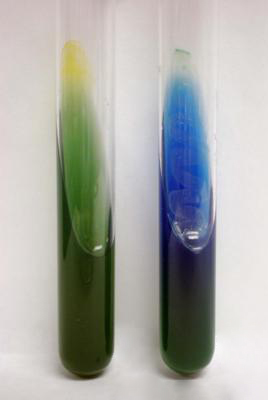Acetate Utilization test

Acetate Utilization test
Differentiate organisms based on ability to use acetate as the sole source of carbon. Generally used to differentiate Shigella spp. from Escherichia coli.
Test Principle
This test is used to differentiate an organism capable of using acetate as the sole source of carbon. Organisms capable of using sodium acetate grow on the medium, resulting in an alkaline pH, turning the indicator from green to blue.
Method
With a straight inoculating needle, inoculate acetate slant
lightly from an 18- to 24-hour culture. Do not inoculate from a
broth culture, because the growth will be too heavy.
Incubate at 35°C to 37°C for up to 7 days.
Expected Results
Positive: Medium becomes alkalinized (blue) as a result of the
growth and use of acetate
Negative: No growth or growth with no indicator change to blue
Limitations
Some strains of E. coli may use acetate at a very slow rate or not at all, resulting in a false negative reaction in the identification process.
REFERENCE:
Bailey & scotts
Diagnostical microbiology
latest edition
Related Content: Bacitracin Susceptibility test – Production of nanoparticles carrying plant extracts


